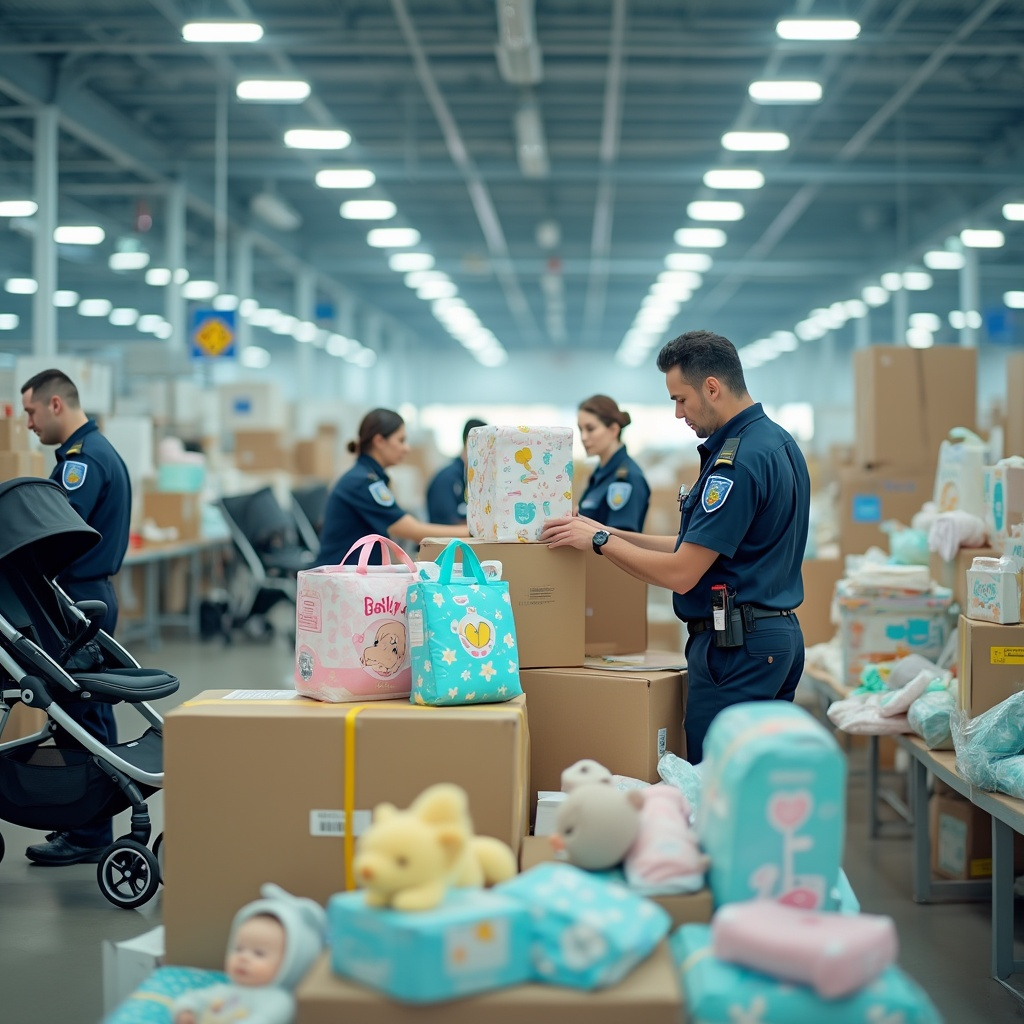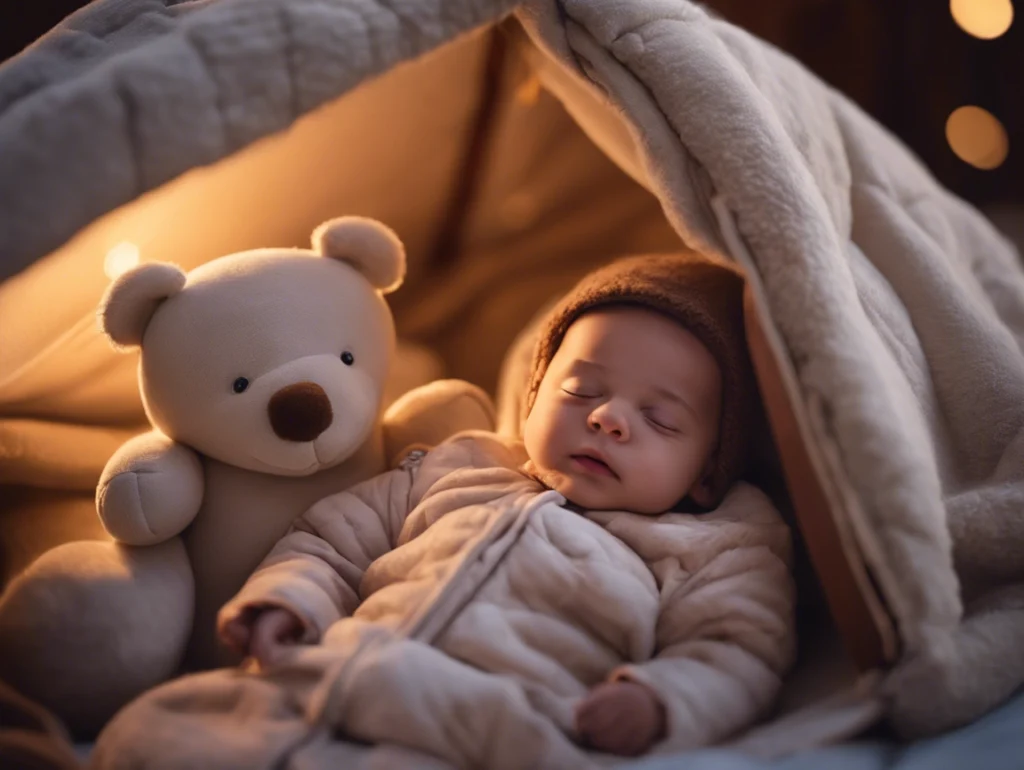When it comes to exporting baby products, there’s a whole new world of rules and regulations to navigate—one that may feel as complicated as trying to assemble a crib with no instructions! But fear not, fellow business owner or importer! The process of customs clearance for exporting baby goods can be straightforward, as long as you know what you’re doing.
Customs clearance is one of the final—and most important—steps in the international shipping process. Without it, your cute baby clothes or organic cotton baby blankets are stuck in limbo. So, how do you ensure your baby products glide smoothly through customs like a well-rested infant after a nap? Let’s break it down step by step.

What is Customs Clearance?
In simple terms, customs clearance is the process of ensuring that goods are legally imported or exported and meet all the requirements set by the authorities of the destination country. It involves providing relevant documentation, paying any duties or taxes, and ensuring the goods are compliant with the country’s regulations.
When exporting baby goods, you have to meet several key requirements that ensure the safety of the products and the legality of the transaction. Since babies are involved, safety and quality are top priorities, and each country has its own set of regulations to enforce this.
Key Customs Clearance Documents for Baby Goods:
| Document | Description |
|---|---|
| Commercial Invoice | Lists the details of the shipment, including product description, price, and seller/buyer info. |
| Packing List | A detailed inventory of the shipment showing how items are packed. |
| Bill of Lading | The shipping contract between the seller and carrier, proving the goods have been shipped. |
| Certificates of Origin | Some countries require proof that the goods were made in the exporter’s country. |
| Product Safety Certificates | For baby products, certificates proving compliance with safety standards (e.g., CE, CPSIA). |
Step 1: Know the Regulations for Baby Products
Before you even start the export process, it’s important to understand the regulatory requirements for baby goods in the destination country. While the world is a big place, countries like the USA, EU, and Australia are particularly strict when it comes to baby product safety.
For the United States 🇺🇸:
- CPSIA Compliance: The Consumer Product Safety Improvement Act (CPSIA) mandates that baby products meet strict safety standards. This includes testing for things like lead content and ensuring products like baby toys or sleepwear meet flammability standards.
- Product Registration: Some baby products may require registration with the CPSC (Consumer Product Safety Commission).
- Link: Learn more about the CPSIA guidelines here.
For the European Union 🇪🇺:
- CE Marking: Baby products sold in the EU must be CE marked, meaning they meet European safety, health, and environmental protection requirements.
- REACH Compliance: Baby goods must also meet REACH (Registration, Evaluation, Authorization, and Restriction of Chemicals) regulations, which restrict the use of harmful chemicals in products.
- Link: Check out the full list of EU product safety regulations.
Step 2: Choose the Right Incoterms
When shipping internationally, Incoterms (International Commercial Terms) define the responsibilities of buyers and sellers regarding the shipment of goods. These terms specify who is responsible for paying for shipping, insurance, and customs clearance.
Some common Incoterms for exporting baby goods are:
- FOB (Free On Board): The seller is responsible for the goods until they are loaded onto the shipping vessel.
- CIF (Cost, Insurance, and Freight): The seller pays for shipping, insurance, and freight to the destination port.
Choosing the right Incoterm helps avoid confusion about who will handle customs clearance and cover associated costs.
Step 3: Determine the HS Code for Baby Goods
Each product being exported must be categorized under a specific Harmonized System (HS) Code. This code helps customs officials identify the product and determine whether it’s subject to duties, taxes, or any special restrictions.
Baby goods, such as toys, apparel, or furniture, each have their own HS code, which helps speed up customs processing. You’ll need to ensure that the right code is used when filing the import/export declaration.
For example:
- Baby apparel might fall under HS Code 6111.30.
- Baby toys may be categorized under HS Code 9503.00.
Tip: Use tools like the HS Code Finder for accurate classification of your baby goods.
Step 4: Work with a Customs Broker
When navigating the complex customs clearance process, having an expert by your side can make a huge difference. A customs broker is a professional who helps you navigate the red tape, ensuring that all the correct paperwork is filed and the correct duties are paid.
A customs broker will:
- File your import/export declaration with the customs authorities.
- Pay duties and taxes on your behalf (if necessary).
- Ensure your baby products meet all the safety and quality regulations for the destination country.
- Link: You can find a reliable customs broker through CBA (Customs Brokers & Forwarders Council of America).
Step 5: Pay the Duties and Taxes
Each country has its own duty and tax system for imported goods. When exporting baby products, you may need to pay import customs duties and sales tax, which can vary depending on the product type and value.
For instance:
- In the EU, goods may be subject to an import duty and Value Added Tax (VAT).
- In the US, the HTSUS (Harmonized Tariff Schedule of the United States) will determine any applicable duties.
Make sure to research the duty rates for baby products in the target market. For example, baby clothing might have a lower duty rate than baby toys made of plastic or metal.
Step 6: Delivery and Final Steps
Once the customs clearance is completed, your baby products will be allowed entry into the destination country. From here, they’ll be sent to their final destination—whether that’s a warehouse, a distribution center, or directly to retailers and consumers.
To avoid delays, be sure all documentation is correct, and any outstanding fees are paid. Also, don’t forget to inspect your goods to make sure they’re in perfect condition—baby products need to be just as safe and snug as the little ones they’re made for!
Conclusion: Customs Clearance Doesn’t Have to Be Scary!
While the process of customs clearance for baby goods may seem like a maze of paperwork and regulations, it’s really about ensuring the safety, legality, and quality of the products you’re sending out into the world. With a little knowledge, the right support, and some thorough preparation, your baby products will be on their way to customers in no time!
By working with experts like customs brokers, knowing the correct HS codes, and understanding the regulatory standards of each market, you can export baby goods smoothly and safely.
Want to get started on your baby product export journey? Check out Endearing Baby for high-quality, eco-friendly baby goods that meet global safety standards!

